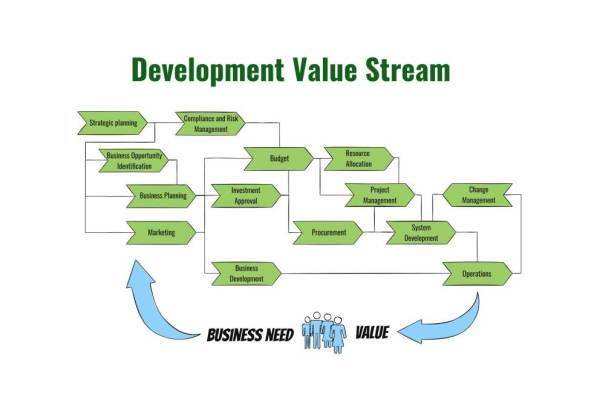Patterns for splitting Epics
Agile teams have been working on their Product Backlog quality for quite some time. The best guidelines for splitting User Stories have been around for more than ten years:
- Ways to split User Stories by Lasse Koskela
- Patterns for Splitting User Stories by Richard Lawrence
- A User Story Primer by Dean Leffingwell.
While there is much experience on the team level, management usually owns the top of the backlog and has some work. I do think it is time to start splitting backlogs into smaller items at all levels. It is not much different on whichever level you work on. Uniform handling of the backlog will create higher throughput and faster feedback.
I have found the guidelines for splitting User Stories useful also when splitting large business or regulatory Epics. I have used the patterns when facilitating backlog refinement. In this article, I have adapted the well-known patterns to give inspiration for the splitting of Epics. I choose to use the word Epic since it seems to be the most popular name for high-level backlog items.
How Small?
Some sources, even Scaled Agile inc, refer to Epics as “large initiatives.” But think about the main idea to manage flow by optimizing batch sizes. Are Epics really an exception that cannot be small if needed? Of course not! The same logic is valid for all backlog items, regardless of who has ownership of them.
Every type of business has different demands, but lead-time should not be longer than your competitor’s. Most companies want to be faster than six months, which is a long time to get feedback from customers and the organization. On the short side, make it as fast as possible. A two-week Epic would be nice.
Which Pattern to Use
You’ll often find that you can split an Epic using several of the patterns. Do not aim for the perfect choice and do not regard these patterns as rules, but help find alternative ways of thinking. Sometimes you can use a combination of patterns, and sometimes you discover new patterns. Start with something, get going, and learn.
On this level, avoid user experience; instead, aim for organizational capability or business functionality. Design details and solutions will have to come later when the Epics are broken down and getting implemented.
A regulatory example
Commonly, regulations become large Epics. These initiatives are “mandatory” and have a strict deadline. The regulations are thoroughly specified and can easily become big-bang implementations. I have chosen a well-known regulation called the General Data Protection Regulation (GDPR) as an example in the following splitting patterns.
Regulatory directives are not only thoroughly specified, but they are also well structured. It means you do not have to become a legal expert to understand that the legislator has already thought of a rough implementation. For example, there are in many cases requirements for a register that may be implemented as one separate deliverable. Of course, you need legal experts, but instead of pre-analyzing everything, they should get involved in properly delivering small parts like the register.
When splitting business Epics, it works in the same way. Do not ask your experts to pre-analyze everything. Use these patterns, find the deliverables, and involve the experts in properly delivering the small parts.
1. Workflow Steps
Identify steps or sub-processes that will occur in sequence within your organization, specified in or influenced by new requirements, and then define these steps as separate incremental Epics.

Tip: Do not make the mistake of using the sequence in your development process—first, analysis, then design, and so on. Only look at your operational value stream!
2. Rule Variations
Since a large Epic, especially regulatory, have plenty of rules, this pattern is evident. Some rules are more complex or extensive and serve as a single Epic. Other more straightforward rules may be grouped in clusters.
Seek to find high-level rules you can understand from a business perspective. In this case, break down the Epic into several Epics to implement one at a time.
Tip: Take the opportunity to assign business value to each rule, requirement, or type of information. Down prioritizing or even dismiss some rules.
3. Major Effort
Sometimes an Epic can be split into several parts where most of the effort is hiding in the first one.
For example, awareness of where personal data is stored and the legal obligations are developed to support the first Epic. The implementation of further Epics should have much less uncertainty.

Tip: When talking about the effort, it is easy to break out technical infrastructure as one or several enablers. Enablers may be delivered first, as a kind platform, but are not used and evaluated until real usage in the operational value stream. Avoid enablers as far as possible. Instead, split Epics into something which can be used in your business.
4. Simple/Complex
When your organization discusses an Epic, and the solution seems to be getting larger and larger, and the path to an agreement is unclear, then stop and ask, “what’s the simplest thing that our business could benefit from in this area?” Capture that simple version as a separate Epic, and then break out other variations into different Epics.

Tip: Modularization is the best thinking pattern to reduce complexity. Components with purpose and a defined interface are usually clean-cut that easily get acceptance.
5. Variations in Data
Data variations and data sources are other factors of scope and complexity. Consider adding Epics just-in-time after building the most straightforward version—an example of where different purposes and sources have been used here.

Tip: Not all data may need to be real or updated in real-time. Early versions can thus use mocked, manually, or seldom updated information.
6. Data Entry Methods
Sometimes complexity is in the communication rather than the business process. In that case, split the Epic to build it with the fundamental communication first and then advanced alternatives to collect data.

Tip: Do not forget to involve the UX people in the process of managing the backlog.
7. Defer System Qualities
Sometimes, the initial implementation isn’t all that hard, and the major part of the effort is making it fast – or reliable – or more precise – or more scalable. However, there is a lot to learn in implementation, and it should have some value to a user who wouldn’t otherwise be able to do it all. In this case, break the Epic into successive “ilities.”

Tip: Always work on the evolving Definition of Done. The best is to have an ongoing discussion of quality, responsibilities, and when a solution is finally delivered.
8. Business Operations
Words like manage or control are a giveaway that the Epic covers multiple operations, offering a natural way to split the Epic.

Tip: Think only about running the current business. When involving future business, it is easy to wind up into a meta-discussion and increase the delivery complexity. For example, operations of Product Development involve data of the employees, suppliers, or partners.
9. Business Use Case Scenarios
If use cases have been developed to represent complex user-to-system or system-to-system interaction, the Epic can often be split into individual use cases.

Tip: Do not Use Cases as a Carved in Stone approved requirement specification. When used as a creative tool in workshops, Uses Cases is fast and straightforward to create a mutual understanding.
10. Break Out a Minimum Viable Product (MVP)
In many cases, the market is uncertain, and it is hard to understand all parameters from a business perspective. Our instinct is to also deal with uncertainties regarding the ability to deliver the solution. On this level, however, we should only focus on the business perspective and assume that, in any case, we will be able to deliver a feasible solution. If an Epic gets prioritized, the teams will later have plenty of opportunities to deal with technical uncertainty through spikes and other measures.
When doing an MVP, start from an assumption and then develop a hypothesis validated through an experiment. Rather than just an experiment, an MVP and the Build-Measure-Learn concept is a scientific approach to understanding the business priorities. To exemplify, compare the usual and introvert assumptions to the left with the alternative assumptions to the right.

Tip: The essence of experiments is to provide results quickly. It is a warning sign when it takes several weeks to get the result out of an MVP. Remember that “M” in MVP stands for “Minimum.” When coding is involved, there is a risk the meaning of “M” will change to “Maximum.”
11. Non-functional requirements
When there are plenty of legacy systems in an organization, a more radical pattern may be the most feasible. Scrap the whole Epic or exclude some systems, departments, or other partitions of the Epic. Maybe some systems are already in the plan for decommissioning. Is it worthwhile to invest in upgrading old systems or instead live the gap or advance retirement?
12. Always split by habit
This last pattern for splitting Epicsis is a meta pattern that addresses culture and leadership. Management needs to be on the front line and show that flow and “optimal batch sizes” are essential. If management understands how splitting works and makes it a habit, the rest of the organization will follow.
If management says:
“We know we must implement these regulatory requirements, so why bother to split it into separate Epics. Let’s decide and let the organization take care of it. Anyhow, we will not get the benefits until we are fully compliant.”
What are then the chances for the rest of the organization to split the backlog and deliver it piece by piece with quality?
Reference
Donald Reinertsen, Principles of Product Development Flow.







